The Kryptonite for these top 10 MLB teams

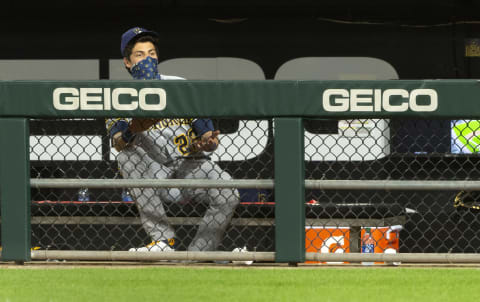
These MLB teams have strong playoff potential, but they also face serious problem areas.
Perhaps appropriately, in this strange 2020 season, there are no perfect teams. Even the best MLB teams have their obvious flaws.
While those shortcomings may not prevent a good team from qualifying for post-season play – especially in a format where more than half the teams earn that distinction – they are ticking time bombs poised to go off at a critical moment in the expanded post-season tournament.
More from Call to the Pen
- Philadelphia Phillies, ready for a stretch run, bomb St. Louis Cardinals
- Philadelphia Phillies: The 4 players on the franchise’s Mount Rushmore
- Boston Red Sox fans should be upset over Mookie Betts’ comment
- Analyzing the Boston Red Sox trade for Dave Henderson and Spike Owen
- 2023 MLB postseason likely to have a strange look without Yankees, Red Sox, Cardinals
And if events of the season’s first two weeks have shown anything, those shortcomings carry the potential to undermine the efforts of even the best teams.
Let’s be clear, we’re not talking about the Miami Marlins, Baltimore Orioles, Detroit Tigers or San Francisco Giants here. True, if the season were to end today, all four of those teams would qualify for post-season play even though all four were widely disparaged in pre-season assessments.
The likelihood is great that those teams really are about as bad as everybody expected, and that in due course their records will recede to the predictable levels. The schedule just hasn’t permitted that to happen yet.
The intriguing thing is toward the top of the game’s food chain, where most of the MLB teams who were expected to perform well have displayed weaknesses. Several of those teams have been able to overcome those weaknesses to date by dint of their overall talent.
But those weaknesses still exist and they will remain problematic right up until the team either wins the World Series or is eliminated.
Here’s a look at the pitfalls looming for the game’s elite ballclubs.
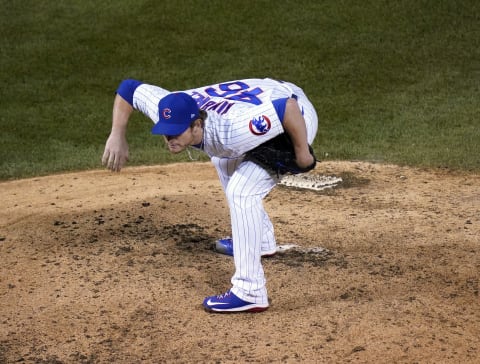
Kryptonite for Top 10 MLB Teams
Chicago Cubs (10-2).
Cubs starters have been superb. Between them, Kyle Hendricks, Yu Darvish, Tyler Chatwood, Jon Lester, and Alec Mills have allowed just 16 earned runs and 45 hits in 74 innings of work, a 1.95 ERA.
At 5.25 runs per game, the offense has been more than adequate, if not great. The Cubs are second in the NL in on-base percentage, second in slugging average and – at .777 — first in OPS.
Through Wednesday, they had played 110 innings of baseball in 2020 and trailed in only 16 of them…that’s 14.5 percent.
They’re in first place in the NL Central by a margin of four and one-half games. The next largest lead in either of the league’s other two divisions is a one-half game. If you assume that a .500 record will get you into the post-season derby, the Cubs can play .416 ball the rest of the way and qualify.
They’ve done all that despite their obvious weaknesses: some of the worst relief pitching in recent history. Their projected closer, Craig Kimbrel, has a 32.40 ERA in three appearances, having allowed nearly twice as many baserunners (eight) as outs he’s recorded (5)….and more runs (6).
Kimbrel’s been the biggest problem, but not the only one. The pen as a group has allowed 28 earned runs in 35 innings of work, a 7.20 ERA. Nine Cubs relievers have ERAs above 5.00, five of them above 10.00. One-quarter of all the runs allowed by Cubs pitchers this season have scored in the ninth inning.
The challenge for Cubs manager David Ross is simple; find a solution to the bullpen issues. Those knowledgeable in the statistical side of baseball have come to the conclusion that it is impossible to go far toward post-season success without a reliable bullpen. The Cubs may be about to test that proposition.
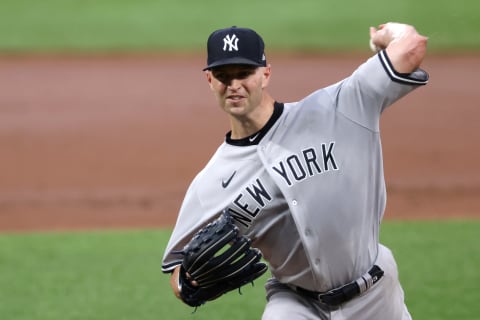
Kryptonite for Top 10 MLB Teams
New York Yankees (9-2)
The Yankees have the game’s best pitcher in Gerrit Cole, signed as a free agent during this past winter. In three starts Cole has been everything Yankee fans might have hoped for, including nearly a strikeout per inning.
They also have one of the most dangerous hitters in Aaron Judge, who’s batting .310 with seven home runs in 11 games. Not that he’d keep it up, but in a normal season that’s a 103-home run pace. Judge has a 1.227 OPS.
He’s actually just one of five Yankees with an OPS surpassing 1.000, the others being Luke Voit (1.012), D J LeMahieu (1.014), Giancarlo Stanton (1.028) and Gio Urshela (1.088). The team’s .831 OPS is MLB’s best by nearly 50 points.
The Yankees’ weaknesses involve rotational uncertainty beyond Cole. In pre-season estimates, the presence of Masahiro Tanaka, J.A. Happ, and James Paxton appeared to reduce any such concerns to a contest as the No. 5 starter. No more.
Tanaka took a Stanton line drive off his head in summer prep and only recently returned from concussion protocol. He looked good but lasted less than three innings.
Paxton and Happ are more problematic. Both have been drilled in their collective four starts, allowing 14 earned runs in 11 innings and losing the only two games the Yankees have lost.
If those veteran left-handers don’t come around, the onus falls on talented but unproven youngsters: Jordan Montgomery, Jonathan Loaisiga, and possibly Luis Cessa.
The Yankees have a lot of offense. They may need it come the postseason.

Kryptonite for Top 10 MLB Teams
Minnesota Twins (10-3)
It’s not hard to see why the Twins are dominating the AL Central. Over the winter they added Josh Donaldson to the majors’ most powerful offense, one that hit a record 307 home runs in 2019.
To date Minnesota pitchers have been supportive, some would say surprisingly so, of the club’s power. The Minnesota staff ranks fourth in MLB in ERA (2.69) and third in runs allowed per game (2.75).
Rising star Jose Berrios is the most talked-about, but the Twins have to date enjoyed quality from more mundane contributors. Second-year pitcher Randy Dobnak has a 0.60 ERA in his three starts, veteran Kenta Maeda is at 2.65, and journeymen Homer Bailey and Rich Hill helped out until both made a visit to one of their favorite professional haunts, the injury list.
Still, that rotation to date poses more weaknesses than strengths. Begin with Berrios, who hasn’t exactly pitched like an ace to date. He gave up five runs in four innings against the White Sox, was just OK in a loss to the Indians, and only picked up his first win this week against the Pittsburgh Pirates, one of the NL’s weakest sisters.
In three starts, Berrios has an unremarkable 4.80 ERA.
Even if the Twins could count on Hill and Bailey, their status is uncertain. That leaves them reliant on Berrios to come around, Dobnak to continue to produce above his projected level, Maeda to continue the performance level he has shown in his first three games and one or two mystery arms to step forward.
One or two of those things is certainly within the realm of possibility. Expecting all five is asking a lot.
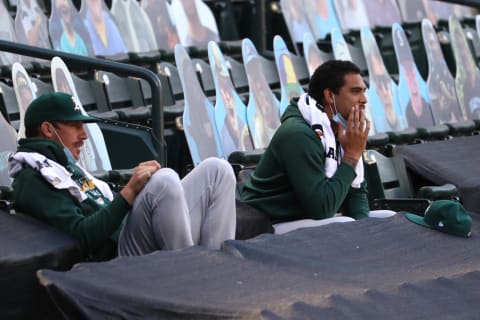
Kryptonite for Top 10 MLB Teams
Oakland Athletics (8-4)
It’s a bit of a mystery how the Athletics are in first place. The offense has been ordinary, scoring 4.33 runs per game, a tic below the 4.35 MLB average. At .206, the team batting average is even worse. Entering the season, the presumption was that three A’s – Marcus Semien, Matt Chapman, and Matt Olson — had to carry the hitting load. Chapman is batting .204, Semien is at .192 and Olson at .179.
So the A’s must have great pitching, right? Great-ish, maybe. The 2.97 team ERA is sixth in baseball; A’s pitchers also rank eighth in strikeouts and seventh in ERA+.
But there are growing concerns, especially with respect to Oakland’s frontline pitching depth. At season’s start, that depth was supposed to be three-fold: Frankie Montas, Sean Manaea and Mike Fiers. Only Montas, with a 2.25 ERA in three starts, has upheld his end of the bargain to date. Fiers and Manaea have been weaknesses.
Manaea, who came back from reconstructive arm surgery to star during the final month of the 2019 season, has been cuffed around in each of his three starts. He has an 8.03 ERA, having lasted just a collective 12.1 innings.
In Fiers’ two starts, he’s winless with a 5.40 ERA. The Angels clipped him for four runs in as many innings in July. His most recent start against the Mariners was better – two earned runs in six innings.
Every expert who saw the Athletics as a 2020 post-season threat predicated that assumption on strong seasons from Fiers and Manaea. That’s still the presumption. If they don’t come around, neither do the A’s.
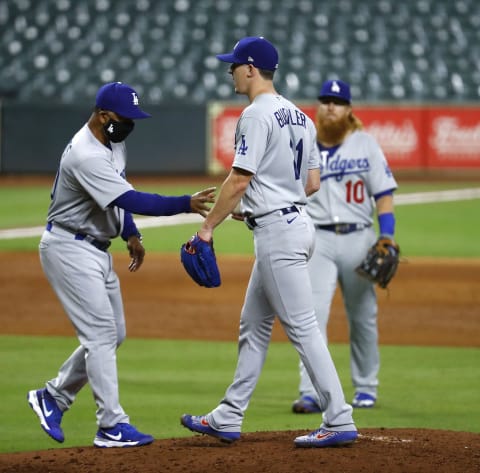
Kryptonite for Top 10 MLB Teams
Los Angeles Dodgers (9-4)
How’s Clayton Kershaw doing these days? How about Walker Buehler?
After starting the season on the injured list, Kershaw made his first appearance this past weekend. He looked good, pitching into the sixth inning against Arizona and winning 3-0.
Buehler’s status may be more of a concern. He’s worked eight and two-thirds innings in his first two starts, but all he has to show for them is a 1-1 record and 5.19 ERA. It’s early but that’s quite a comedown from his 14-4, 3.26 performance of just one year ago.
For all the team’s obvious offensive might, the Dodgers need Kershaw and Buehler to perform at ace levels for the rest of the 2020 season. The other options are Ross Stripling, Dustin May, Julio Urias, and maybe rookie Tony Gonsolin, all talented but all also untested in the grind of a serious post-season. Their presences are potential weaknesses
Remember, this is a team doing without 68 starts from 2019 in the departures of Hyun-Jin Ryu, Kenta Maeda, and Rich Hill, plus another passel of starts David Price isn’t making due to his decision to opt-out of the season for health reasons.
There’s no doubt about the Dodger offense. Cody Bellinger may be hitting .170, but that’s temporary and Corey Seager (.347) is covering for him nicely. The issue is pitching leadership. If the Dodgers are serious about winning the season’s final game – not just lots of games but the last one – they need the anchors of a talented but young rotation to deliver consistently.
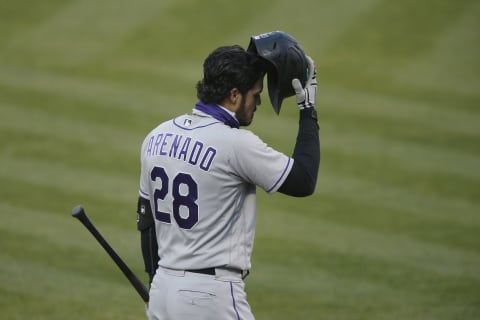
Kryptonite for Top 10 MLB Teams
Colorado Rockies (8-3)
It’s hard to know which to believe in less, the Rockies pitchers or the Rockies hitters.
At this early stage of the season, that pitching staff looks awfully good. Antonio Senzatela, German Marquez, Kyle Freeland, and Jon Gray – four guys who have worn the ‘potential’ label since their emergences – all have ERAs under 3.40 in a combined 10 starts.
After opening with five strong performances on the road – four of them victories – that staff came home to Coors Field. The raw numbers have gone up – the Rocks are giving up four and a half runs per game at home, two per game more than on the road, and just as would be expected. But they’ve pulled out four home wins.
That’s largely thanks to offensive weaknesses. The Rockies have been more opportunistic than explosive. Nolan Arenado is batting just .244, and Trevor Story’s .275, while entirely acceptable, is hardly the stuff of legend. To date right fielder Charlie Blackmon has been the fuel guy. His .378 average is seasoned by a team-high 12 RBIs, all of them in the past eight days.
As a team, the Rockies aren’t especially hitting for power, and they’re also not getting on base at any noteworthy rate. They stand ninth in on-base average (.324) and in slugging average (.420), both of which belie their standing as the NL West leader. The key has been depth. They’re hitting .266 as a team, second in the majors behind only the Chicago White Sox.
Since being shut out 1-0 by Lance Lynn in the season opener, Colorado has scored five runs or more eight times in 10 games.
Still, buying into the Rockies as serious World Series contenders requires accepting a lot on faith. In descending order of probability, those assumptions include that the bats or Arenado and Storey will come around, that Blackmon will stay hot, and that the pitching staff will prove as reliable over the long haul as it has in the first two weeks.
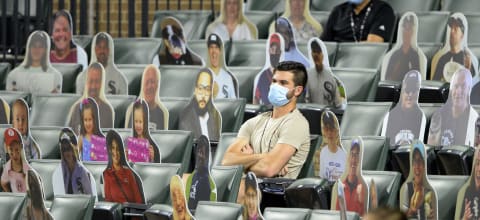
Kryptonite for Top 10 MLB Teams
Chicago White Sox (7-5)
Two weeks into the 2020 season, it’s becoming easier to buy into the White Sox lineup.
Luis Robert is batting .354 with a .957 OPS. Maybe he is everything he’s been touted as. Before going on the injured list, Tim Anderson was off to a .333 start in defense of his 2019 batting title. Yoan Moncada (.326) has established himself as a middle-order fixture.
The Sox lack a dominant power threat, but they have power balance. With three, Eloy Jimenez leads the team in home runs, but nine Sox have hit at least one. The team’s .279 batting average leads the majors.
Two major off-season additions, Yasmani Grandal and Edwin Encarnacion, are homerless, but that will inevitably change soon.
The big weaknesses concern the rotation, and they start right at the top with Lucas Giolito. His first three starts have been, to be charitable, ordinary. He’s carrying a 5.17 ERA and 1-1 record, not having yet pitched beyond the sixth inning.
Chicago needs Giolito because, with the exception of veteran Dallas Keuchel, the rest of the rotation is superbly suspect. Dylan Cease, Carlos Rodon, and Reynaldo Lopez have made five starts with a collectively brutal 9.79 ERA.
It’s possible those numbers represent early blips. In that context, however, it worth noting that all three finished 2019 with ERAs above 5.00.
In short, the Sox need Giolito to dominate because they can’t count on their three through five pitchers for quality.
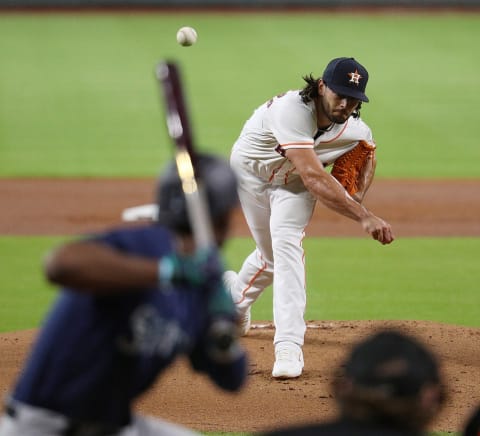
Kryptonite for Top 10 MLB Teams
Houston Astros (6-5)
The Astros’ bountiful talent core has been compromised by the least preventable of weaknesses, injuries. Those need to clear up if Houston is to make a serious postseason run.
Begin with Justin Verlander, sidelined a week ago with arm soreness. He’s on the sideline for another few days, following which he’ll be re-evaluated, following which … who knows?
Lance McCullers was supposed to be a valued supplement to Verlander – and/or replacement for Gerrit Cole. But coming off arm surgery that cost him all of 2019, McCullers has to date debuted in inglorious fashion. He’s carrying a9.22 ERA in his three starts, encompassing just 13 and two-thirds innings.
The Astros anticipated getting a maturing season from Jose Urquidy, a 2019 rookie. But he’s been sidelined with COVID issues, and his return date is unknown.
That has left the Astros to count on second-liners of the stripe of Josh James, Cristian Javier, and Framber Valdez.
Given the new post-season format, the Astros figure to be playing October baseball, even if their vaunted offense doesn’t begin to hit. It hasn’t to date; Jose Altuve is batting .146, Alex Bregman is at .213 and George Springer is hitting .195. That will change.
But even when it does, do the Astros really want to enter post-season with a rotation featuring Lance McCullers, Josh James, and Framber Valdez? Their hopes of avoiding that scenario hinge on the questionable returns to pitching form of Verlander and Urquidy.
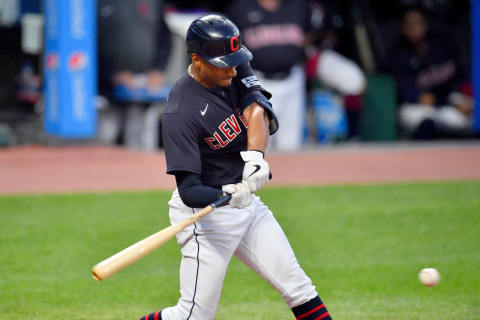
Kryptonite for Top 10 MLB Teams
Cleveland Indians (7-6)
The Indians have the majors’ best pitching staff. That’s what the data shows to this moment, anyway.
Cleveland’s staff ERA is 2.21, well ahead of the runner-up Dodgers (2.42). They’ve allowed 2.31 runs per game, creating a larger gap between themselves and the second-place Miami Marlins (2.67) than exists between the Marlins and the Dodgers, back in fourth at 2.85.
Shane Bieber’s exploits have been lauded, but it hasn’t been just one guy. Bieber (3-0, 0.83) leads a rotation that is a collective 7-4 with a 2.46 ERA.
The issue, of course, is on the offensive side of the equation. The Indians rank dead last among the 30 MLB teams in both runs scored per game (2.62) and batting average (.181). At .262, they’re also last in slugging.
It’s no surprise, then, that Cleveland’s six losses have come in games in which the staff allowed a total of just 20 runs…but the team only scored six.
That makes the score of an average 2020 Indians loss 3-1. That’s tough for even a great staff to overcome.
The Indians only have a couple of bonafide threats in their regular lineup. Francisco Lindor is batting .231, third baseman Jose Ramirez is at .277.
But the outfield is a collective disaster area. Of Cleveland’s five most frequently used outfielders – Jordan Luplow, Oscar Mercado, Domingo Santana, Bradley Zimmer, and Daniel Johnson – only Johnson (.240) is above .158. Luplow is 20 plate appearances in a search for his first base hit.
In the AL Central, the Indians stand a legitimate chance of challenging for the division title, and a solid chance of reaching post-season play. At some point, however, somebody has to hit the ball at least a little.
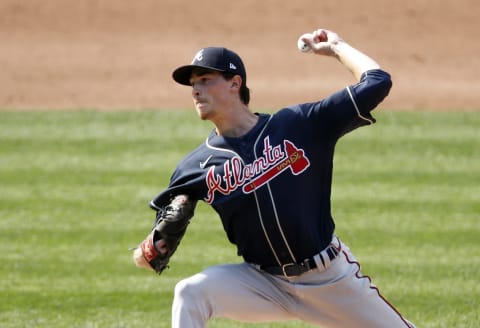
Kryptonite for Top 10 MLB Teams
Atlanta Braves (8-5)
The Braves recently designated Mike Foltyniewicz for assignment. Now they’ve lost Mike Soroka to an Achilles injury.
This isn’t the way the rotation was supposed to shape up.
Without Soroka and Foltyniewicz, the Braves rotation is down to Max Fried, a potentially legitimate ace, plus Sean Newcomb, Kyle Wright, Touki Toussaint, and maybe you or me. Cole Hamels was supposed to be part of the picture, but he’s injured. Felix Hernandez was supposed to be part of the picture, but he opted out.
The situation is far from hopeless. The Braves are 8-5, they’ve beaten one of their chief challengers, the Mets, five out of seven and the only team they’re chasing is the Miami Marlins. If you have to chase somebody, that’s a good pick.
But the offense, candidly, has been sluggish. Freddie Freeman is off to a .190 start with just one home run, Ozzie Albies was hitting .159 when he went on the injured list, and Ronald Acuna Jr. is sitting at an uninspiring .240.
Those problems are likely to be short term. The damage already done to the pitching staff is more substantive. Veteran Jhoulys Chacin is on hand, but he’s piled up a 7.20 ERA in two relief appearances and was awful last season.
If the Braves don’t uncover some rotation help quickly, it may not matter whether their bats come around.
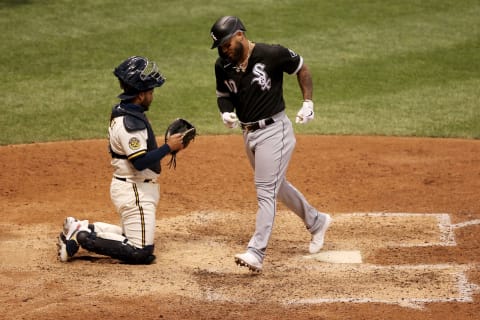
Kryptonite for Top 10 MLB Teams
Others
Milwaukee Brewers (4-5). Offensive weaknesses. Christian Yelich is batting .088. He’s one of three Brewers regulars batting under .200, and one of five under .250. Yelich will certainly come around, but are you as confident about Omar Narvaez (.118), Justin Smoak (.156) or Eric Sogard (.231)?
More from MLB News
- MLB Power Rankings: Atlanta Braves still on top with major shifting below them
- Caesars MLB Promo Code: Two Shots at Picking the World Series Winner!
- MLB Power Rankings: Atlanta Braves still on top amid a big shake-up in top 10
- DraftKings MLB Promo: Bet $5 on an Anytime Home Run, Win $150 Bonus GUARANTEED
- MLB Power Rankings: After MLB trade deadline, gap is closing on Atlanta Braves
St. Louis Cardinals (2-3). Scheduling weaknesses. The Cardinals are poised to resume play without either catcher Yadier Molina or shortstop Paul DeJong. They’ll also be staring at a stack of makeup doubleheaders that are certain to complicate the plans of even their deep pitching staff. Combine that with an indifferent first seven games and you have problems.
Cincinnati Reds (5-7). Scoring weaknesses. There is every indication that only two NL Central teams will make the post-season, and also every indication that the Chicago Cubs will be one of them. That leaves the Reds, Brewers, and Cardinals fighting for one spot.
In the Reds’ favor is the fact that they’ve played a dozen games, and have no COVID makeups staring at them. Neither the brewers nor Cards can say that. But for all their star power, the Reds have started indifferently. They rank below the league average in both runs per game and batting average, and they’re also sub-par in runs allowed per game.
Guillen says how he really feels about Swisher. dark. Next
Tampa Bay Rays (5-7). Offensive weaknesses. The Rays have pitched up to expectations. But the offense has sabotaged their ability to stay with the Yankees in the AL East. The .211 team batting average is well below the MLB.230 average, and Tampa Bay also lags in on-base average (.303) and slugging (.365). Those aren’t Cleveland-level numbers, but they’re certainly problematic during the post-season.